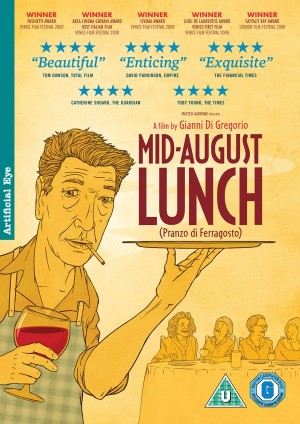2009
8.8

Co-en-i-za-tion:
-noun
the attribution of a universal or symbolic quality to transient and otherwise helpless human beings.
A Serious Man, the Coen brothers' 14th feature, opens with the quote “Receive with simplicity everything that happens to you.” If ever there was an aphorism which the characters in the brothers' films applied less to their lives, I would like to see it. Whether it be the vendetta driven Lewelyn Moss or the scheming of Jerry Lundegaard, Coen characters have a unfailing tendency to complicate their lives in a misguided effort to simplify them. In A Serious Man we bear witness to the trials and tribulations of Larry Gopnik (Michael Stuhlbarg). In a state of constant frenetic panic, Larry's world unwinds until nothing remains but the very core of his being. In it's calling into question the usefulness of allegory and its subsequent affect on our ability to endure misfortune, the Coen's make one of the more remarkable turnarounds of their impressive career. A Serious Man exalts rather than depraves the suffering of its protagonist, easily making it the most humanitarian film in the brothers' grim body of work.
Over the course of their career, the Coens have become masters of allegorical realism. The self-contained worlds of their films give the impression that there is always a lesson needing to be learned. Occasionally this attribute has devolved into absurd social satire (Burn After Reading) but for the most part the Coens have maintained the heady combination of stories unique enough to capture our interest but universal enough to sustain the high moral ground they tend to tread upon. A Serious Man aligns itself most closely with Fargo as a film about the universe inflicting its indifferent wrath upon a man. Like Jerry Lundegaard and Barton Fink before him, Larry Gopnik becomes painfully aware of his own simplicity and impressionability, which in turn shatters the small world he lives in. However, the parallels to A Serious Man are not found simply within a single text or within the Coen's oeuvre. The film is a composite of numerous stories with each marking the point at which faith in a higher power must either be accepted or rejected.
To call A Serious Man a film about Judaism is both a under and overstatement. The important religious elements are here (faith, morality, fidelity, etc.) but the film is not simply about a man coming to terms with God's way (“The boss isn't always right, but he's always the boss.”). Larry, in Murphy's Law free fall, is driven by the question “Why?” but the Coens are driven by a different, related question: “How?” How do we believe? The brothers point to the religious significance of allegory and parable which have played a large part in how they tell their own stories. Where Larry, in vain attempts to assert his seriousness, seeks to understand the math or the reason behind his suffering, the Coens suggest that there is no reason and never was. In their impressionistic use of the story of Job (Larry), David and Goliath (Larry's habitually pot smoking son Danny [Aaron Wolff] is hounded by the beastly Fagle), and Adam and Eve (the film's prologue in the Polish shteti) among others, the Coen's are really illustrating a complex portrait of the uselessness of parables as a means of, or reason for, living.
This reading is complicated because without the allegories to give it existential buoyancy A Serious Man might never leave its narrative bed; lying prostrate in the face of an uncaring universe. When Larry seeks spiritual guidance from a trinity of Rabbis he finds the naivete of the junior Rabbi an immediate tool for reassessment. When this fails, the practiced pragmatism of the 2nd Rabbi, who not only gives Larry a feasible solution but also becomes the mouthpiece for the Coens assertions about the use of purpose driven tales, only redoubles Larry's conviction that God wishes him to suffer. From the 3rd Rabbi he is given nothing, which is perhaps all he ever needed. Throughout the film various characters give credence to Larry's suffering as he proclaims to everyone “I haven't done anything!” The tighter Larry grips his metaphysical oiled rope, the faster he descends into the swirling madness of the film's finale.
“I understand the math. I don't understand the cat,” Larry asserts to his blackmailing Korean student, Clive. In this case the context is Shrodinger's Paradox, but the quote can be read widely. Larry is a rational man but the world is not a rational place. Through sheer perseverance Larry attempts to understand why these unfortunate incidents keep occurring in his life but ironically detaches himself from their real life consequences. We constantly are catching him in media res, always shocked by some new fact that, to him and us, has come out of nowhere. Though it may sound like a world of suffering, the Coens actually come to empathize with Larry. Calling attention to their own thematic use of allegory, the Coens have finally found a character they do not wish to make a martyr of contemporary morality. They almost give him a satisfying ending but then it wouldn't be a Coen brothers film without some level of ambiguity. Larry's call from the doctor and the approaching storm are not the final nails in the grave of the Gopniks or the Jewish clan at Saint Louis, Minnesota. They are, in fact, reiterations of the film's opening quote. We never truly figure out what is right and wrong because the destructive will of the universe (or God) comes to sweep us all away before our existential queries are answered. With questions swirling around the film's ending (What will happen Larry? Why isn't Danny frightened of the oncoming tornado? What is the significance of the recurring Jefferson Airplane song?), the film's iconic final shot may be the best answer. Or perhaps better still are the words of Clive's inconsistent father: “Please, accept the mystery.”


